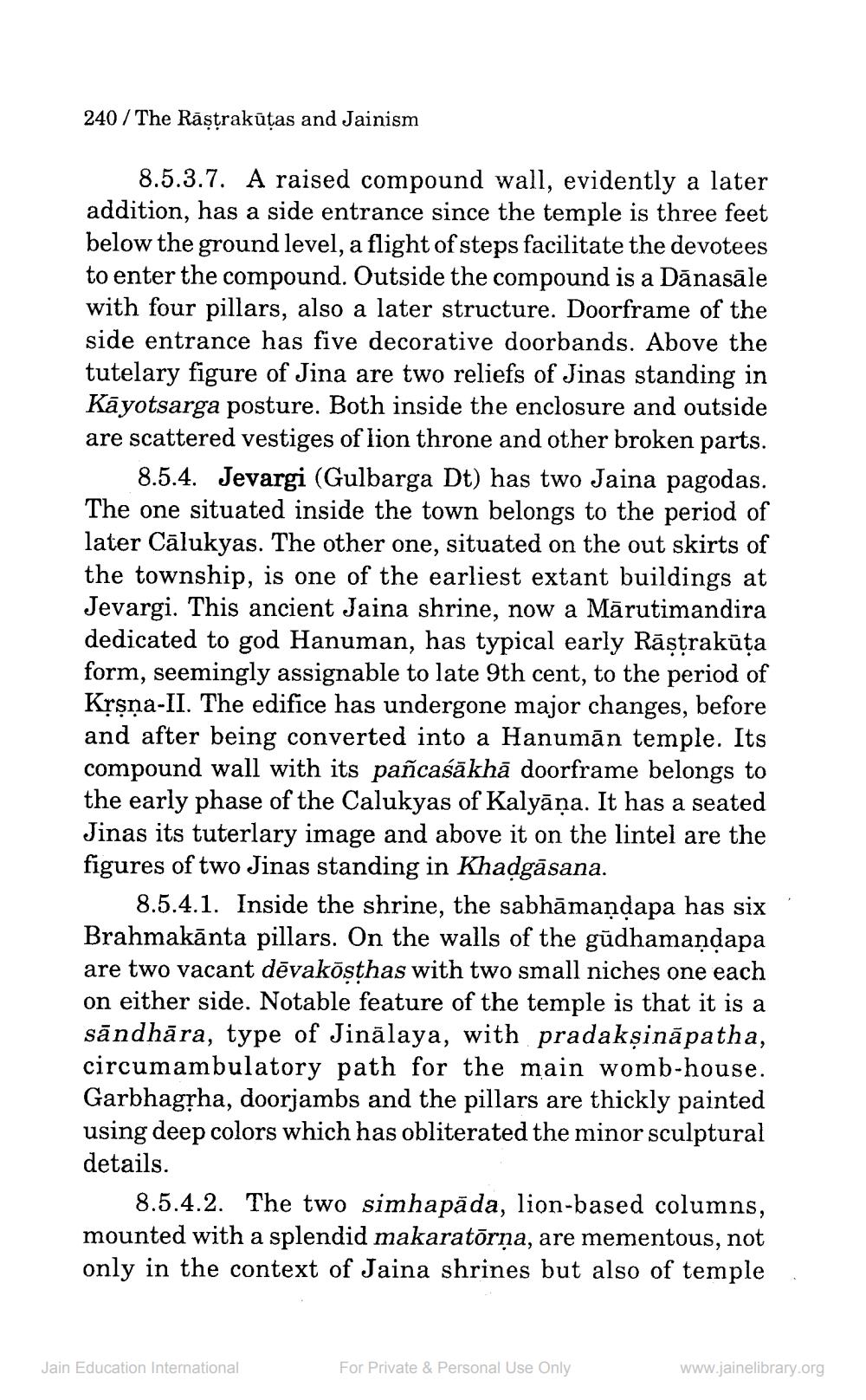________________
240 / The Rāstrakūtas and Jainism
8.5.3.7. A raised compound wall, evidently a later addition, has a side entrance since the temple is three feet below the ground level, a flight of steps facilitate the devotees to enter the compound. Outside the compound is a Dānasāle with four pillars, also a later structure. Doorframe of the side entrance has five decorative doorbands. Above the tutelary figure of Jina are two reliefs of Jinas standing in Kāyotsarga posture. Both inside the enclosure and outside are scattered vestiges of lion throne and other broken parts.
8.5.4. Jevargi (Gulbarga Dt) has two Jaina pagodas. The one situated inside the town belongs to the period of later Cālukyas. The other one, situated on the out skirts of the township, is one of the earliest extant buildings at Jevargi. This ancient Jaina shrine, now a Mārutimandira dedicated to god Hanuman, has typical early Rāstrakūta form, seemingly assignable to late 9th cent, to the period of Krsna-II. The edifice has undergone major changes, before and after being converted into a Hanumān temple. Its compound wall with its pañcasākhā doorframe belongs to the early phase of the Calukyas of Kalyāņa. It has a seated Jinas its tuterlary image and above it on the lintel are the figures of two Jinas standing in Khadgāsana.
8.5.4.1. Inside the shrine, the sabhāmaņdapa has six Brahmakānta pillars. On the walls of the gūdhamandapa are two vacant dēvakõsthas with two small niches one each on either side. Notable feature of the temple is that it is a sāndhāra, type of Jinālaya, with pradaksināpatha, circumambulatory path for the main womb-house. Garbhagļha, doorjambs and the pillars are thickly painted using deep colors which has obliterated the minor sculptural details.
8.5.4.2. The two simhapāda, lion-based columns, mounted with a splendid makaratorņa, are mementous, not only in the context of Jaina shrines but also of temple
Jain Education International
For Private & Personal Use Only
www.jainelibrary.org




